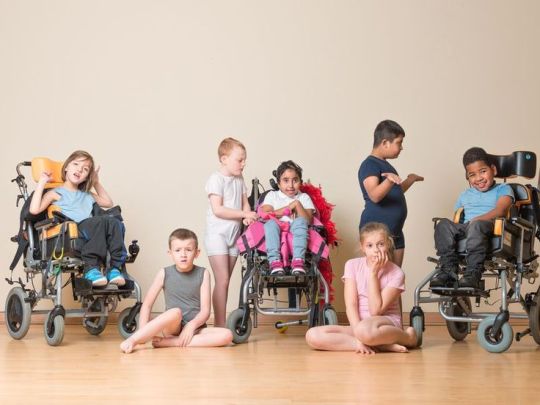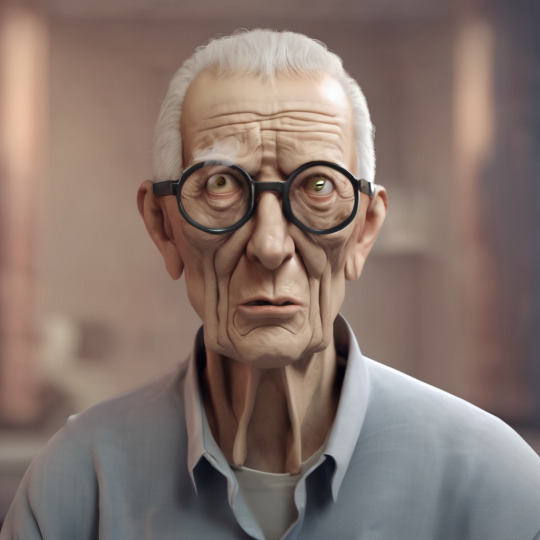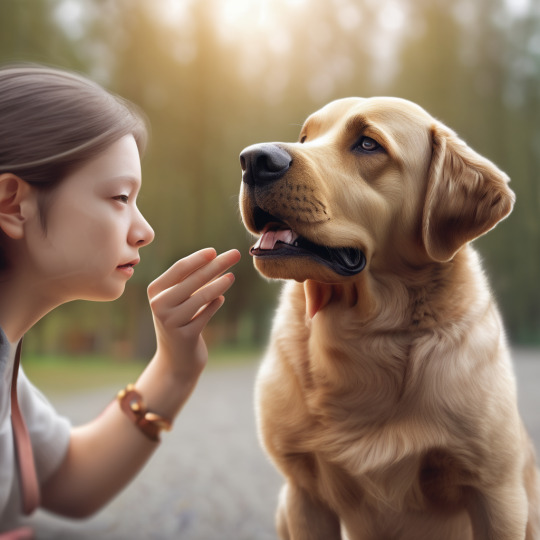Text
#•#DisabilityNutrition#HealthyEatingForAll#AccessibleFood#InclusiveDiets#DisabilityWellness#EatWellLiveWell#PhysicalDisabilityDiet#DiabeticMeals (if relevant)#DysphagiaDiet (if relevant)#SensoryFriendlyFood (if relevant)#BlindCooking#GlutenFree (if relevant)#NutFree (if relevant)#ImprovedEnergy#ReducedHealthRisks#StrongerBody#BetterMobility#ManageSymptoms#LiveIndependently#AdaptiveKitchenTools#EasyRecipes#MealPlanningTips#DisabilityCookingHacks#HealthySnacks#DeliciousAndNutritious#FoodieForAll#DisabilityCommunity#GetCreativeInTheKitchen#NutritionWins
0 notes
Text
0 notes
Text
24 Proactive Steps to Reduce the Risk of Disabilities

While some disabilities are unavoidable, many can be prevented or mitigated through proactive measures. Here are 24 steps that can be taken throughout life to minimize the risk of disabilities:
Prenatal and Early Childhood:
Preconceptional Health: Maintaining good health before pregnancy, including folic acid supplementation, can reduce the risk of birth defects.
Prenatal Care: Regular prenatal care allows for early detection and management of potential risks during pregnancy.
Safe Delivery: Access to skilled birth attendants and quality healthcare facilities reduces birth injuries.
Vaccinations: Following recommended immunization schedules protects children from debilitating infectious diseases.
Safe Sleep Practices: Following safe sleep practices, like placing babies on their backs to sleep, reduces the risk of Sudden Infant Death Syndrome (SIDS).
Early Intervention: Identifying and addressing developmental delays early can significantly improve outcomes.
Injury Prevention: Childproofing homes and supervising children reduces the risk of accidental injuries.
Nutritional Adequacy: Ensuring children receive proper nutrition supports healthy development.
Childhood and Adolescence:
Healthy Lifestyle: Promoting healthy eating habits and regular physical activity reduces the risk of obesity and chronic diseases that can lead to disability.
Mental Health Support: Addressing mental health challenges like depression and anxiety can prevent social and emotional disabilities.
Hearing and Vision Screening: Regular screenings can identify and address hearing and vision impairments early on.
Road Safety Education: Teaching children safe pedestrian and cycling practices minimizes traffic-related injuries.
Dental Care: Maintaining good oral hygiene and regular dental checkups prevent dental issues that can impact overall health and well-being.
Adulthood and Aging:
Healthy Habits: Continuing healthy eating and exercising habits throughout life reduces the risk of heart disease, stroke, and other chronic conditions.
Substance Abuse Prevention: Avoiding substance abuse, including tobacco, alcohol, and illicit drugs, protects physical and mental health.
Regular Checkups: Regular medical checkups allow for early detection and management of potential health issues.
Workplace Safety: Implementing and adhering to safety protocols in workplaces reduces the occurrence of occupational injuries and illnesses.
Fall Prevention: Modifications in homes and addressing balance issues can prevent falls, a major cause of disability in older adults.
Bone Health Maintenance: Maintaining healthy bone density through diet and exercise reduces the risk of osteoporosis and fractures.
Vision and Hearing Care: Regular eye exams and hearing tests ensure timely interventions to address vision and hearing loss.
Community and Societal Level Measures:
Accessibility Initiatives: Promoting accessible infrastructure and public spaces allows people with disabilities to participate fully in society.
Disability Awareness Education: Combating stigma and fostering understanding of disabilities encourages inclusion and creates a more supportive environment.
Public Health Programs: Investing in public health programs, including sanitation and disease prevention initiatives, reduces the risk of preventable disabilities.
Research and Innovation: Supporting research on causes and prevention of disabilities, as well as advancements in assistive technologies, paves the way for a more inclusive future.
Remember:
These measures are not a guarantee, but they can significantly reduce the risk of disabilities. By implementing these actions individually and collectively, we can create a world where everyone has the opportunity to live a healthy and fulfilling life.
#•#PrenatalPower:#VaccinationNation:#SafeLittleSleepers:#EarlyInterventionWins:#FuelYourBody:#MindMatters:#SeeClearlyHearLoudly:#RoadSafetyWarriors:#SmileBrightly:#LifelongBalance:#SubstanceFreeLiving)#KnowYourNumbers:#WorkplaceSafetyFirst:#FallProofYourHome#AccessibilityForAll:#BreakTheStigma#PublicHealthHeroes:#InnovationForInclusion:#DisabilityAwareness#DisabilityPrevention#ProactiveHealth#LiveLimitless#Empowerment#CommunityCare#StrongerTogether
0 notes
Text
Why are there no more TV commercials for toddlers with disabilities?

The Shift in Representation: Why We See Fewer TV Commercials Featuring Toddlers with Disabilities
The landscape of television advertising, particularly for products aimed at children, has undergone significant changes over the past few decades. While commercials featuring toddlers with disabilities were once more prevalent, their presence has become less frequent. This shift reflects a broader societal evolution in representation and inclusivity. Let's explore some possible reasons behind this decline:
1. Moving Beyond Inspiration:
Shifting Focus: Early commercials featuring children with disabilities often leaned heavily on the "inspirational" narrative. The focus was on overcoming challenges, with the product playing a secondary role in aiding this triumph. This approach, while well-intentioned, could be seen as patronizing and fail to resonate with viewers who desired a more nuanced portrayal.
Authentic Representation: There's a growing emphasis on authentic representation in advertising. Audiences expect to see children with disabilities simply being children – playing, laughing, and enjoying their lives – instead of solely defined by their disability.
2. Targeting the "Real" Decision-Makers:
Parental Influence: Decisions about children's products are often made by parents or caregivers. Advertisers are increasingly targeting this demographic directly. Instead of focusing solely on the child's experience, commercials might highlight how the product benefits both the child and the caregiver, offering solutions to real-life challenges parents face.
Focus on Product Functionality: Modern commercials tend to take a more product-centric approach. The emphasis is on showcasing the features and benefits of the product in a clear and engaging way. This allows parents to assess how the product can specifically address their child's needs, regardless of ability.
3. The Rise of Social Media and Targeted Advertising:
Micro-Targeting: The rise of social media and targeted advertising allows companies to tailor messages to specific demographics. Instead of relying on mass-market television commercials, companies can reach niche audiences (including parents of children with disabilities) through online platforms and create more relevant, targeted messaging.
There are a few reasons why you might not see as many TV commercials featuring toddlers with disabilities:
Shifting Advertising Strategies: Advertising has moved heavily online, with targeted social media campaigns often replacing traditional TV commercials.
Focus on Authenticity: Modern marketing might favor featuring real families in their everyday moments, potentially showcasing disability in a more natural way.
Evolving Representation: The emphasis might have shifted towards inclusive casting across various media, where disability becomes a part of the character rather than the sole focus of the advertisement.
Influencer Marketing: Influencer marketing, where trusted individuals promote products online, has gained traction. Parents of children with disabilities might be sought out to showcase how a product works within their everyday lives, offering a more relatable and authentic perspective.
The Future of Representation:
Moving Towards Inclusion: The decline of commercials featuring toddlers with disabilities purely for "inspirational" purposes doesn't translate to a lack of inclusion. Instead, it signifies a shift towards more genuine and diverse portrayals.
Inclusion as the Norm: The goal is for inclusivity to become the norm, where children with disabilities are naturally represented in advertising alongside their peers without disabilities. This reflects the reality of classrooms, playgrounds, and families everywhere.
Ultimately, the advertising landscape continues to evolve. While television commercials featuring toddlers with disabilities might be less frequent, the broader conversation about representation and inclusivity remains ongoing. The goal is to create a world where all children see themselves reflected in the media they consume, celebrating individuality and the value of every member of society.
#•#DisabilityRepresentation#InclusiveMarketing#WeNeedMore#DisabilityInMedia#RepresentationMatters#ChangingTheNarrative#DisabilityAndChildhood#ToddlerLife#WhereAreTheKids#EarlyRepresentation#RepresentationStartsYoung#DisabilityPride#MarketingQuestion#DiversityInAdvertising#LetsTalkAboutIt#WheresTheInclusion#FoodForThought#RepresentationGoals
0 notes
Text
Why do guide dogs wear coats but not blind people? 2024

It might seem curious why a guide dog would be sporting a stylish coat while its human companion walks coatless on a chilly day. The answer lies in the different needs and purposes each serves:
1. A Working Uniform: Enhancing the Dog's Performance
Temperature Regulation: Guide dog coats aren't just for show. They can help regulate the dog's body temperature, which is crucial for maintaining focus and stamina while working. In hot weather, a lightweight, breathable coat can prevent overheating. In colder climates, a thicker coat helps retain warmth, allowing the dog to perform comfortably for extended periods.
Visibility and Identification: Some coats have reflective patches or bright colors that enhance the dog's visibility in low light or crowded areas, ensuring the safety of both the dog and its handler. Additionally, coats often display patches or logos indicating the dog is a working animal, prompting others to give them space while on duty.
Protection from the Elements: Guide dogs might encounter various weather conditions during their workday. Coats can offer protection from rain, snow, or debris, keeping the dog comfortable and healthy. This is especially important for maintaining good paw health, which is crucial for their work.
2. Human Comfort and Independence
Climate Control for Humans: Blind people generally have the same ability to regulate body temperature as sighted individuals. They can choose clothing appropriate for the weather to maintain comfort.
Focus on Mobility and Independence: Wearing a coat can sometimes restrict a blind person's freedom of movement, especially when navigating unfamiliar environments. A focus on tactile and auditory cues might require unimpeded arm and upper body movement.
Personal Style and Preference: Ultimately, clothing choices are a matter of personal preference. A blind person might choose not to wear a coat simply because they prefer not to.
3. A Team Effort: Different Needs, Shared Purpose
Partners in Navigation: Both the guide dog and the blind person work together as a team. The dog's coat serves a functional purpose related to its working needs, while the human prioritizes comfort and mobility for efficient navigation.
Mutual Success: Ultimately, the goal is for both the guide dog and the blind person to perform their tasks comfortably and safely. The dog's coat contributes to its well-being and focus, which translates into a smoother experience for the person relying on its guidance.
Function Over Fashion: Why Guide Dogs Wear Coats While Their Handlers Don't
The sight of a guide dog in a bright harness and coat is a familiar one. But have you ever wondered why these canine companions get decked out while their human handlers navigate the world "unclothed"? Here's the breakdown:
Visibility: A brightly colored coat makes the dog more easily recognizable in crowded areas, enhancing safety for both the dog and the handler.
Identification: Some coats might have patches indicating the dog is a working animal or carrying specific information like the handler's disability.
Human Needs vs. Canine Needs: Humans can typically adjust their clothing based on the environment. Guide dogs, however, may not have the same ability to regulate their body temperature or express discomfort.
In conclusion, the seemingly curious difference in attire between a guide dog and its handler stems from their distinct roles. The guide dog's coat is a working uniform, promoting comfort and focus during its essential service. The human companion prioritizes individual comfort and mobility for navigating their environment with the support of their canine partner.
#GuideDogs #WorkingAnimals #DisabilityAwareness #GuideDogLife #AnimalScience
#WhyTheCoat #BlindnessAwareness #SeeingEyeDog
#2024Learning #DogFacts #DidYouKnow #InterestingAnimals #ScienceQuestions #GuideDogLove
#WorkingDogWednesday (if posted on a Wednesday)
#DisabilityCommunity #BlindCommunity #VisionLoss #InclusionMatters
#AccessibilityForAll #EqualRights
0 notes
Text
Who is the father of disability?

https://dp-ho.com/perspective/who-is-the-father-of-disability-excluded-community(opens in a new tab)
#•#disabilityrights#disabilityadvocate#disabilityinclusion#celebratedisability#disabilityhistory#whd#edroberts#disabilityleader#independentliving#disabilitystudies#berkeley#whoknew#funfact#disabilityhero#makingadifference
0 notes
Text
Can blind people tell if a dog is friendly by its smell? Or do they have to pet the dog and see how it reacts to touch?

Navigating the World with More Than Sight: How Blind People "Read" Dogs
For blind individuals, navigating the world relies heavily on senses beyond sight. When it comes to encountering a dog, the question of friendliness can be a crucial one. Here's a breakdown of how blind people assess a dog's temperament, revealing a world rich in sensory detail:
1. The Power of Scent: While smell doesn't definitively tell the whole story, blind people can glean valuable information from a dog's odor. A relaxed dog might emit a neutral scent, while a stressed or aggressive animal might have a stronger, potentially unpleasant odor due to elevated stress hormones.
2. Decoding Vocal Cues: A dog's bark, growl, whine, or whimper are all forms of communication. A playful bark sounds different from a territorial growl. Blind people become adept at interpreting these vocalizations, understanding the emotional state of the dog.
3. Body Language Through Touch: While petting isn't always the initial step, a gentle touch can reveal a wealth of information. A relaxed dog might offer a loose wagging tail and a soft lean, while a tense dog might stiffen or pull away. This physical interaction allows for a more nuanced understanding of the dog's body language.
4. Context is Key: The environment plays a significant role. Encountering a dog on its home turf might elicit more guarded behavior compared to a neutral park setting. Blind people often pay close attention to surroundings to understand the context of the encounter.
5. The Value of Training and Experience: Just like anyone else, experience plays a crucial role. Blind individuals who interact with dogs regularly become more skilled at interpreting subtle cues. Additionally, training programs can equip them with the knowledge and confidence to navigate canine encounters effectively.
Beyond Canine Companionship:
It's important to remember that not every dog encounter is about potential companionship. For a blind person using a guide dog, recognizing signs of aggression in other dogs is crucial for ensuring safety during walks. Understanding a dog's temperament allows them to maintain control and navigate potentially risky situations.
Technology as a Tool:
Technology is also evolving to assist blind people in understanding their surroundings. For example, some apps are being developed that analyze sounds and translate them into text messages, potentially offering real-time information about a dog's vocalizations.
The Importance of Communication:
Open communication remains key. When encountering a blind person with a guide dog, it's always a good practice to ask permission before interacting with the dog. This ensures safety and allows the blind person to assess the situation comfortably.
A World of Sensory Perception:
While sight plays a critical role in human interaction, the world of a blind person is far from devoid of information. By honing their other senses and utilizing different strategies, blind individuals can navigate the world confidently, understanding the nuances of canine encounters and building positive relationships with these furry companions.
1 note
·
View note